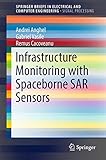Infrastructure Monitoring with Spaceborne SAR Sensors [electronic resource] / by ANDREI ANGHEL, GABRIEL VASILE, REMUS CACOVEANU.
Material type: TextSeries: SpringerBriefs in Electrical and Computer EngineeringPublisher: Singapore : Springer Singapore : Imprint: Springer, 2017Description: XII, 79 p. 41 illus., 37 illus. in color. online resourceContent type:
TextSeries: SpringerBriefs in Electrical and Computer EngineeringPublisher: Singapore : Springer Singapore : Imprint: Springer, 2017Description: XII, 79 p. 41 illus., 37 illus. in color. online resourceContent type: - text
- computer
- online resource
- 9789811032172
- 621.382 23
Introduction -- Signal model for Synthetic Aperture Radar (SAR) Images -- Scattering Centers Monitoring in SAR images -- Case study: Puylaurent Water-Dam and Chastel Landslide -- Conclusion.
This book presents a novel non-intrusive infrastructure monitoring technique based on the detection and tracking of scattering centers in spaceborne SAR images. The methodology essentially consists of refocusing each available SAR image on an imposed 3D point cloud associated to the envisaged infrastructure element and identifying the reliable scatterers to be monitored by means of four dimensional (4D) tomography. The methodology described in this book provides a new perspective on infrastructure monitoring with spaceborne SAR images, is based on a standalone processing chain, and brings innovative technical aspects relative to conventional approaches. The book is intended primarily for professionals and researchers working in the area of critical infrastructure monitoring by radar remote sensing.
